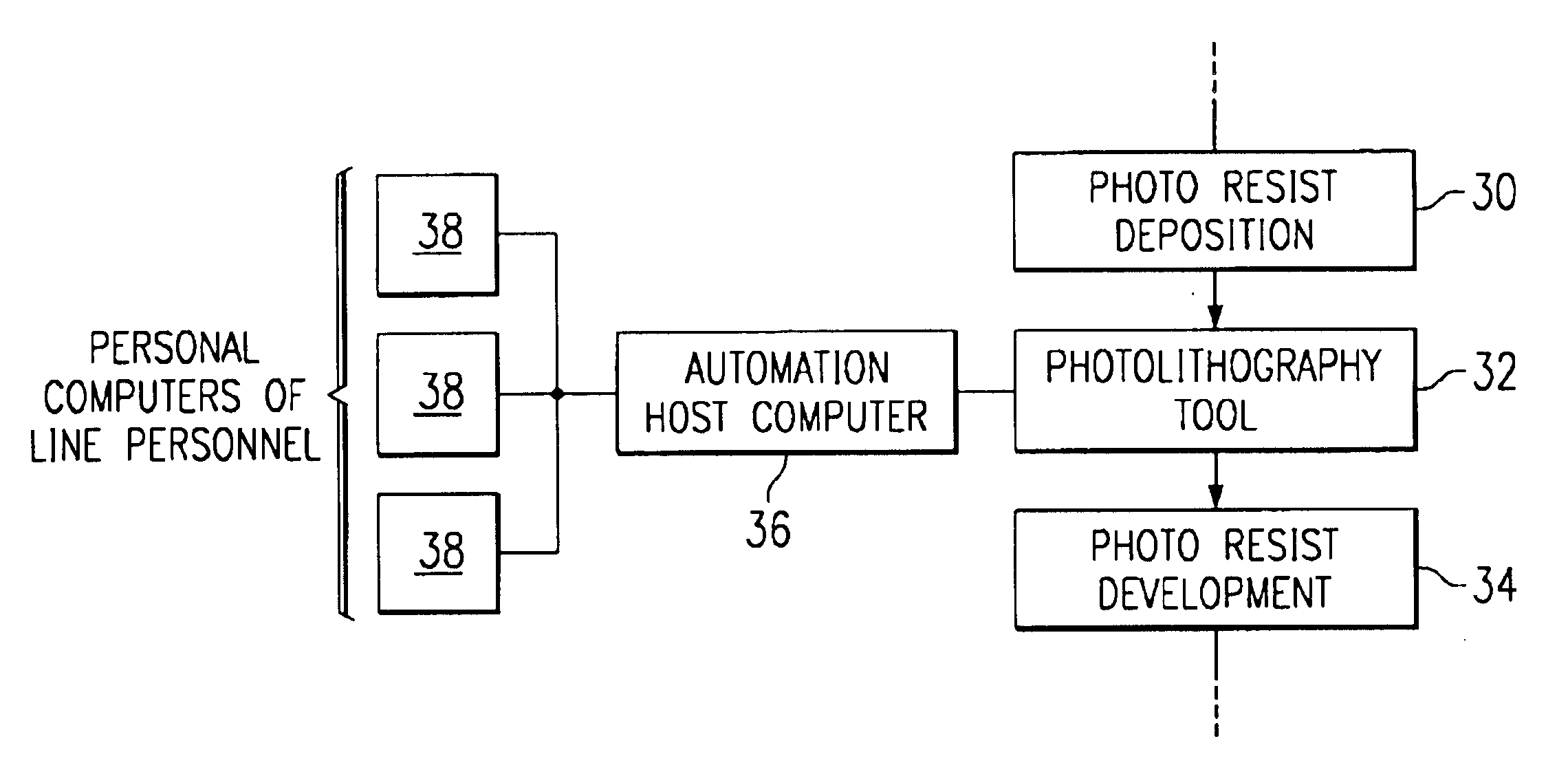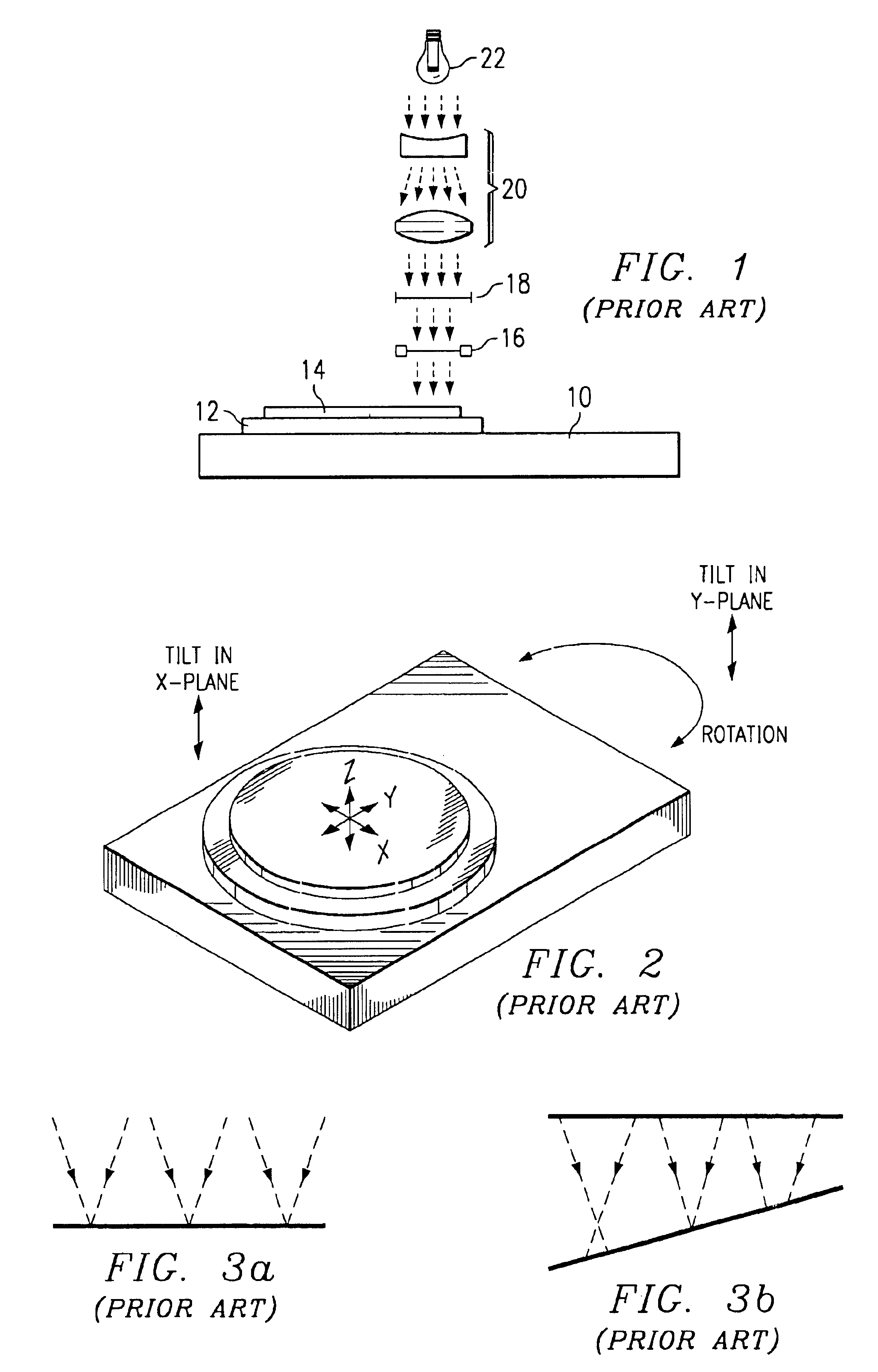Error reduction in semiconductor processes
a technology of semiconductor processes and errors, applied in the field of photolithography, can solve problems such as failure to solve the problem of resolution failure, one or more dies of the wafer being scrapped fast enough to respond. the effect of reducing costs
- Summary
- Abstract
- Description
- Claims
- Application Information
AI Technical Summary
Benefits of technology
Problems solved by technology
Method used
Image
Examples
Embodiment Construction
FIG. 4 is a block diagram of a portion of a semiconductor integrated circuit fabrication process. The initial block 30 represents the equipment used to deposit, spin, and bake the photoresist onto a wafer. It is followed by the photolithography tool 32 and then by the equipment 34 dedicated to photoresist development. An automation host computer 36 is coupled to the photolithography tool and is also coupled to the personal computers 38 of relevant line management personnel through a local area network, for example.
In one embodiment of the invention, data recording the movement of the stage as the tool 32 seeks to maintain focus as it steps or scans are used to detect die-to-die, wafer-to-wafer, and lot-to-lot defects or errors that have an adverse effect on yield. The automation host computer 36, which controls the tool, reacts to detection of such problems by generating an alert signal and by taking an action specified in an action look-up table, for example. The severity of the pr...
PUM
 Login to View More
Login to View More Abstract
Description
Claims
Application Information
 Login to View More
Login to View More - R&D
- Intellectual Property
- Life Sciences
- Materials
- Tech Scout
- Unparalleled Data Quality
- Higher Quality Content
- 60% Fewer Hallucinations
Browse by: Latest US Patents, China's latest patents, Technical Efficacy Thesaurus, Application Domain, Technology Topic, Popular Technical Reports.
© 2025 PatSnap. All rights reserved.Legal|Privacy policy|Modern Slavery Act Transparency Statement|Sitemap|About US| Contact US: help@patsnap.com



